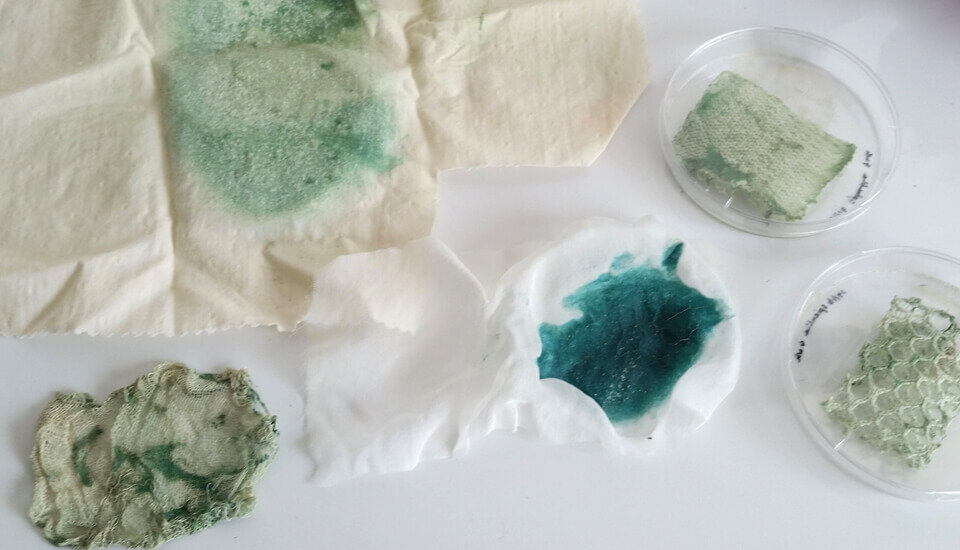If you’re embracing a conscious style journey, a great starting point is to be more mindful about how you care for your garments. This often-overlooked aspect plays a significant role in reducing your fashion footprint—proper care allows you to enjoy your garments for longer, which is crucial for minimizing fashion waste.
As each material requires distinct care, let’s delve into a comprehensive, material-by-material guide to help you master the art of caring for your garments.
Why is it important to care for your garments for sustainability?
Longer-lasting garments: Proper care can help extend the life of your garments, reducing the need for frequent replacements. This not only saves you money but also helps reduce the demand for new clothing, which in turn conserves natural resources and reduces waste.
Lower environmental impact: The fashion industry is a major contributor to environmental pollution, with the production of textiles, dyeing, and finishing processes generating significant amounts of waste and consuming vast quantities of water and energy. By caring for your garments properly, you can reduce the need for these harmful processes and decrease your environmental footprint.
Encourages mindful consumption: By taking the time to care for your garments, you become more aware of the materials they are made of and the impact of your choices on the environment. This awareness can lead to more conscious and sustainable purchasing decisions in the future.
Minimizing microplastic pollution: Synthetic fabrics, such as polyester and nylon, can release microplastics during washing. By washing these garments less frequently and using specialized laundry bags or filters, you can help reduce the release of microplastics into the environment.
Promoting the circular economy: Proper garment care, along with repairing, upcycling, and recycling, encourages a more circular approach to fashion. This means reducing waste and making the most of resources by keeping clothing in use for as long as possible before recycling or repurposing them.
Caring for Different Materials:
While many of us care for our garments by color, separating whites from colors and darks, caring for your garments by material type is crucial for extending their lifespan, preserving their appearance and functionality, preventing damage, saving resources, and fostering mindful consumption.
Cotton
Cotton is a natural, breathable material that is relatively easy to care for. To maintain the quality and longevity of cotton garments, follow these tips:
Wash cotton clothes in cold water, as hot water can cause them to shrink.
Use a gentle detergent to prevent damage to the fibers.
Air dry cotton garments or tumble dry on low heat to prevent shrinking and maintain softness.
Iron on low to medium heat, using a cloth between the iron and the garment to prevent scorching.
Wool
Wool is an incredible material for its insulating features, but as anyone who’s accidentally put a wool sweater through the wash knows, it requires special care. Here are some guidelines for caring for wool garments:
Hand wash or use a gentle cycle on your washing machine with cold water and a mild detergent specifically designed for wool.
Gently squeeze out excess water and lay the garment flat on a clean towel to air dry. Avoid wringing or twisting, as this can damage the fibers and cause the garment to lose its shape.
Store wool garments folded rather than hanging to prevent stretching.
To remove wrinkles, use a steamer or iron on low heat with a damp cloth between the iron and the garment.
Silk
Silk is one of my favorite materials for its soft luxurious feel— but this delicate material requires special care. To keep your silk garments in pristine condition, follow these tips:
Hand wash silk garments in cold water with a mild detergent designed for delicate fabrics.
Avoid wringing or twisting the garment, as this can cause damage to the fibers.
Lay the garment flat on a clean towel to air dry.
Iron silk on low heat, using a cloth between the iron and the garment to prevent scorching or shiny marks.
Synthetic fabrics (polyester, nylon, acrylic)
Synthetic fabrics are durable and easy to care for, but they also contribute to microplastic pollution. To care for synthetic garments and minimize their environmental impact, follow these guidelines:
Wash synthetic garments in cold water and use a gentle detergent.
Consider using a microfiber-catching laundry bag or filter to capture microplastics during the wash cycle.
Air dry or tumble dry on low heat.
Iron synthetic garments on low heat, using a cloth between the iron and the garment to prevent melting or damage to the fabric.
Denim
Denim, the quintessential wardrobe staple that effortlessly combines style and durability, but to keep this ever-reliable fabric looking tip-top, a little tender loving care goes a long way.
Wash denim garments sparingly, as frequent washing can cause fading and wear. Spot clean stains when possible, and turn jeans inside out before washing to preserve color.
When washing denim, use cold water and a gentle detergent to prevent shrinking and color loss.
Air dry denim garments or tumble dry on low heat. Avoid high heat, as it can cause shrinking and damage to the fibers.
Iron denim on medium heat, using a cloth between the iron and the garment to prevent scorching.
Leather
Leather, with its timeless appeal and undeniable durability, is a material that truly deserves some TLC to keep it looking fabulous for years to come. Here are some expert tips to pamper your leather garments and ensure they remain at their stylish best:
Wipe down leather garments with a damp cloth to remove dirt and dust. Avoid using water or detergent, as this can damage the leather.
Condition leather garments regularly with a leather conditioner to prevent drying and cracking.
Store leather garments in a cool, dry place away from direct sunlight to prevent fading and damage.
If your leather garment becomes wet, gently pat it dry with a clean cloth and allow it to air dry away from heat sources.
General Tips for Sustainable Garment Care
Wash clothes less frequently: Over-washing can cause wear and tear on your garments, shortening their lifespan. Washing less frequently can help preserve the quality of your clothes and reduce water and energy consumption.
Use eco-friendly detergents: Opt for plant-based, biodegradable detergents that are free of harsh chemicals. These detergents are less harmful to the environment and can help preserve the quality of your garments.
Repair and mend: Instead of discarding damaged clothing, consider repairing or mending them to extend their lifespan. This not only saves you money but also helps reduce waste and the demand for new clothing.
Donate or recycle: When you no longer need a garment, consider donating it to a charity or recycling it through a textile recycling program. This can help keep clothing out of landfills and give them a new lease on life.











